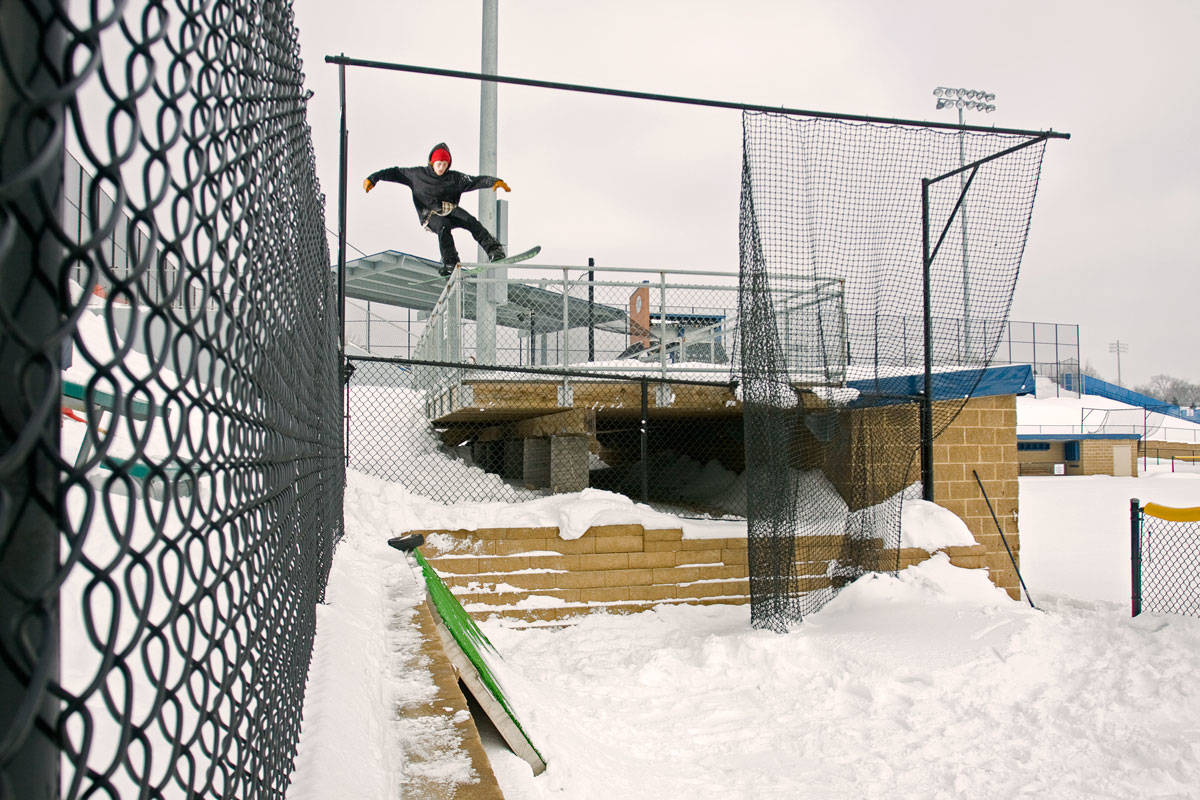Brandon Lepasti is a Minneapolis based Portrait photographer. He completed his BFA from The Art Institutes International Minnesota. Brandon finds himself particularly attached to snowboarding since childhood, and in turn, snowboard photography. He has been the recipient of the FY 2013 Artist Initiative grant from the Minnesota State Arts Board along with many other awards and titles.
View complete portfolio at brandonlepasti.com.
1. Tell us about the initiation of your career in photography? Did you always want to be a photographer?
I was a sponsored snowboarder back in high school. I used to enter regional competitions in Minnesota and Wisconsin and I filmed for a local snowboard production company based out of St. Cloud, Minnesota. I was snowboarding 4-5 days out of the week, if not more, and all of my close friends loved snowboarding just as much as I did. Snowboarding was my life and I still attribute a good portion of who I am today to snowboarding. Unfortunately, not everyone can make a living off snowboarding and so eventually I found myself thinking about college. I was trying to think of a way to remain in the snowboard industry and found myself debating between going to school for photography and videography, since both play a strong role in the industry. I knew nothing about aperture, shutter speed, ISO, or white balance settings. All I knew was that I wanted to be creative and I felt I had an eye for good composition. In the summer of 2009, I began attending The Art Institutes International Minnesota for my BFA in Photography. I would never see life with the same eyes again.

Brandon Lepasti Photography
2. What according to you are the strengths and weaknesses in your photography?
I believe my strengths are also what I enjoy most about photography – arranging my composition and using/manipulating light to compliment my scene. I see everyday objects as graphic elements that can create balance, movement and repetition in a photograph. I see the world in lines and shapes and I enjoy exploring the numerous ways they work with one another to create visually pleasing imagery. Similarly, I have an appreciation for light and shadow and how the two can have an affect on one’s emotions. I enjoy the challenge in being plopped in a given environment and having to study the quality of light and how I can add to or manipulate it. These aspects of photography have helped me to see life in such a unique way and I am grateful for that.
I have many weaknesses, but there is one that stands out in my mind most. Like many photographers and other creatives, I have the tendency to fixate myself on one idea – usually my first idea. I often pre-visualize what my photographs will look like, so it can be pretty frustrating when things don’t go as I had imagined. I tend to waste so much time trying to solve the problem and later, while observing my photographs on a computer, I realize there were plenty of other avenues I could have ventured down. Although I have made progress on this narrow mindedness, I have nearly drove myself insane with this in the past while creating numerous photographs.
3. On your portfolio, you’ve named one of your photo galleries “3 sec. clip”. Please share with us the reason behind it.
3 Sec. Clip is the name of a photographic essay book I made while in college – documenting the action and lifestyle behind the scenes of what it takes to make a snowboard movie. There are numerous snowboard production companies that release a film once every year. Depending on company budgets, these movies are distributed locally, nationally, and even internationally.
Related: Me, a Monster? – A Short Movie made with Blender
The films consist of an introduction, roughly seven to twelve rider sections, and the credits. Countless hours, days, weeks, and months of hard work are crammed into a two to three minute video part. I am intrigued by the effort it takes to achieve a three second clip, hence the reasoning behind the book/album title.
As a side note, the book consists of far more images than I included on my website. The book goes more in depth. I chose a select few of my favorite images to be included on my website with the idea that I will add to it over the years.

Brandon Lepasti Photography
4. For you, what makes an image worthy of being in a portfolio?
Every image in a portfolio should be strong technically and aesthetically. That is a given. The images as a whole should also reflect the photographer’s unique vision and style, which is developed over time and can be ever-changing. Finally, and perhaps most importantly, the images should speak to the viewer – evoke some kind of emotion, feeling or response.
5. Which genre of photography do you find yourself most attached to and why?
Of course I enjoy snowboard photography because that is where my roots are. However, while in college, I grew a strong interest in portraiture, especially while on location. If I have to pick one, I would say environmental portraiture is my favorite genre of photography. I thoroughly enjoy the creative process of figuring out how to best portray a person in a given scene. Each and every portrait shoot presents its own challenges, which in return open the doors to so many creative solutions. My inspiration to make a portrait of someone is based on their unique physical environment, human characteristics, and the role they play in our society.
Read More: I would like to reassure all photographers of every level of skill or those in the above-mentioned groups, with a level of desire or knowledge and especially those that fear to take the right steps to achieve your goals of becoming a great photographer.
Check out Bruce Smith the portrait photographer from France for more details.

Brandon Lepasti Photography
6. If you could pick any photographer as your mentor, who would you pick and why?
Although he is no longer alive, I would choose Arnold Newman as my mentor without a doubt. He was one of the most innovative and influential photographers of the 20th and 21st century. He is most known for being the “Father of Environmental Portraiture.” Newman often mentioned the use of graphic elements in his photographs, but he not only unitized these elements for the sake of visual pleasure, he also had a purpose behind the way he arranged his compositions to better reflect his subject and who they were. I would like to have followed him on some assignments to see exactly how he approached his subjects and to hear him speak out loud what he was thinking while composing his photographs.
7. How did you come across Pixpa and how has been the experience for you so far?
Unfortunately, I do not have the patience to learn code. I am overwhelmed with a cluster of symbols, numbers and letters. Fortunately, there are a handful of companies out there providing photographers with sleek website templates. I chose Pixpa because their website templates are tastefully designed and they are very affordable. Also, their drag-and-drop style editor is very user-friendly. Building my website was fairly painless. Overall, I am very pleased with Pixpa and what they have to offer. I would recommend them to a friend.

Brandon Lepasti Photography
I am planning to make some drastic updates to my portfolio website in the near future, so please visit frequently.
Also Read:
How to Choose a Video Shutter Speed


